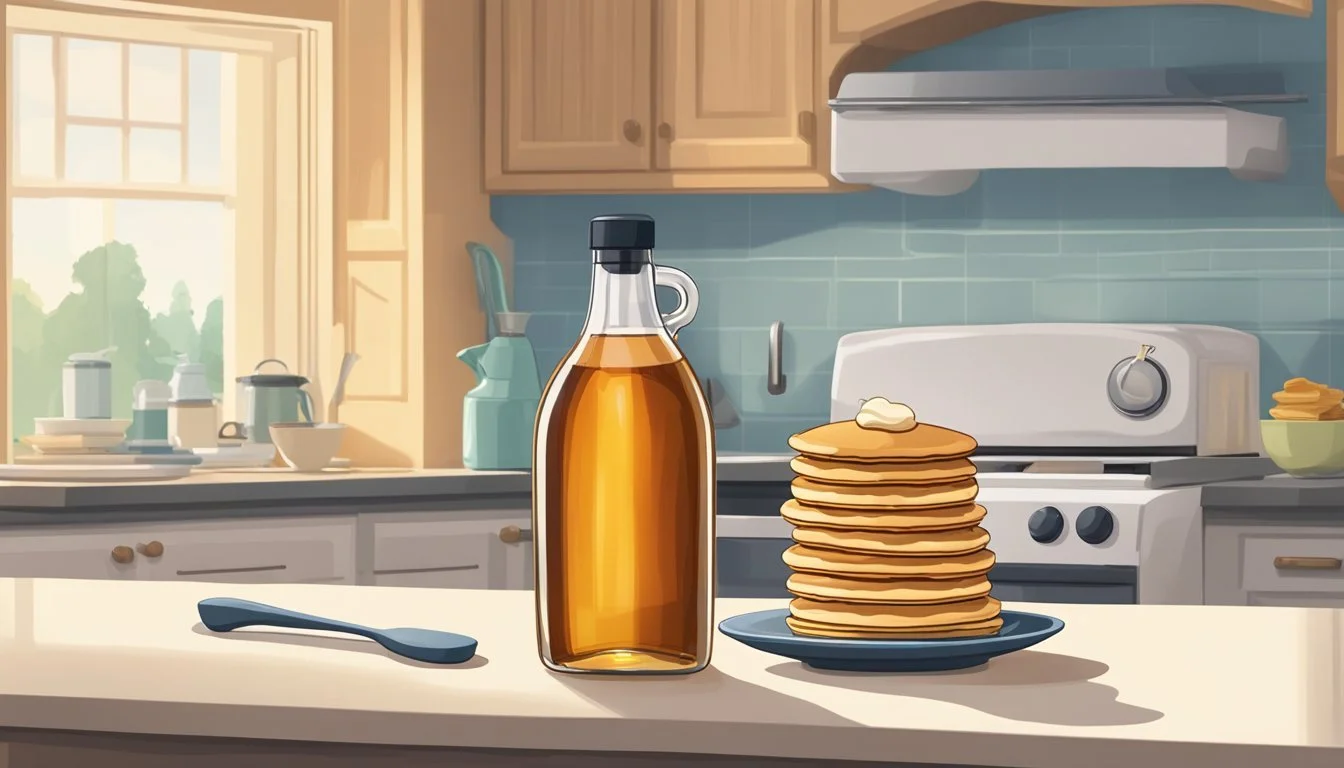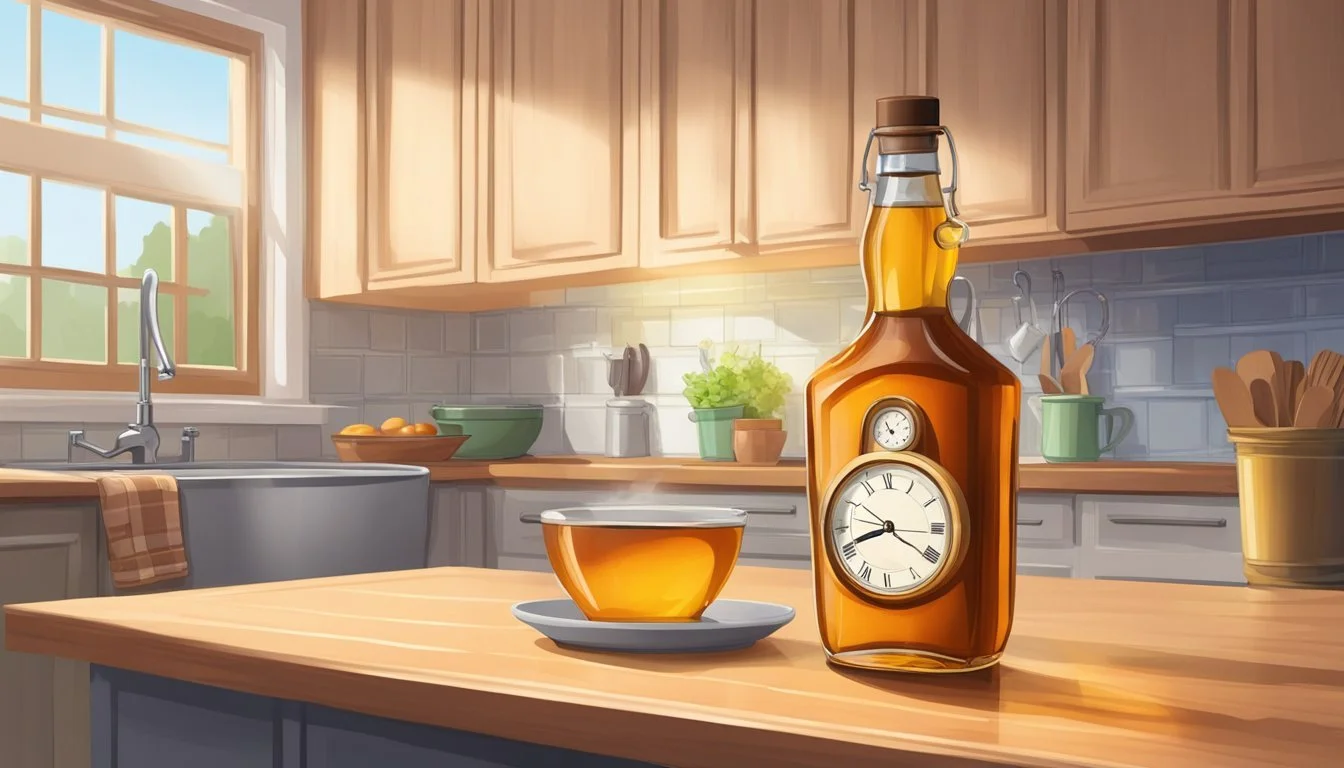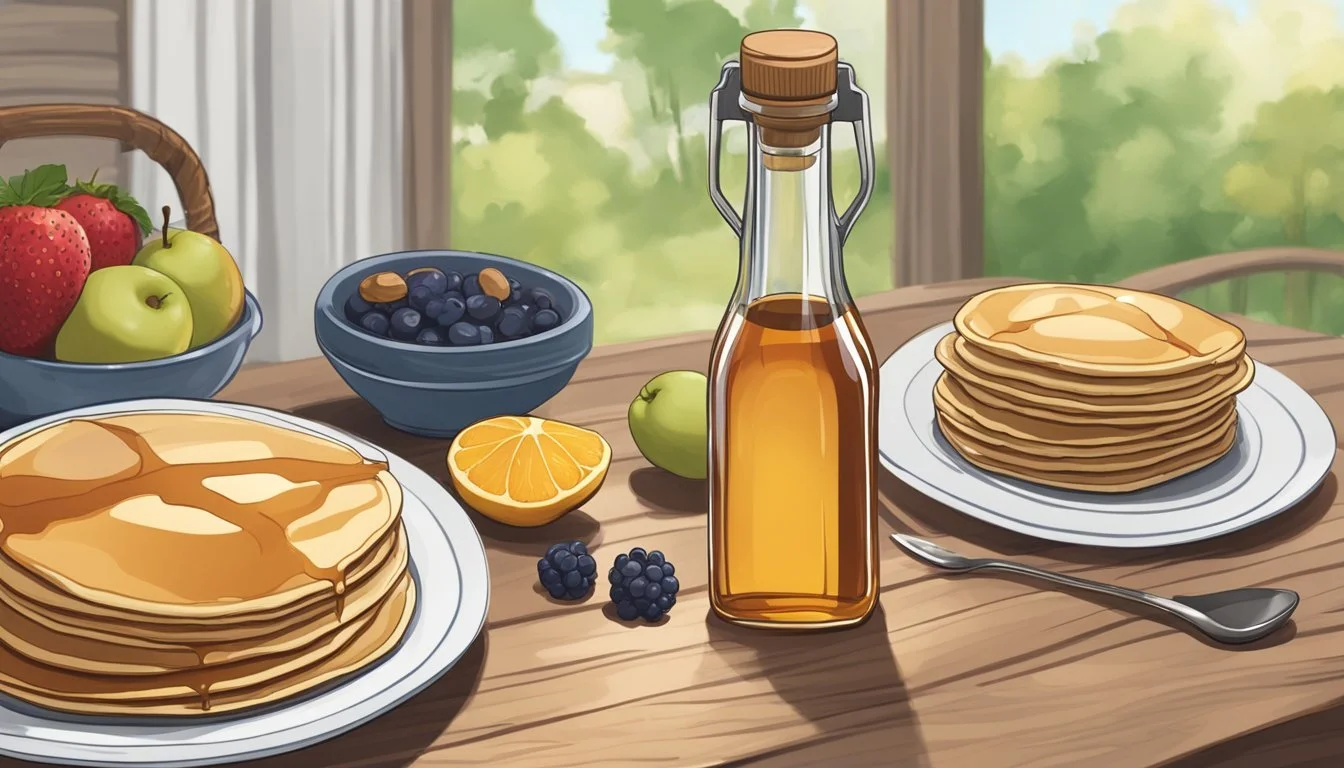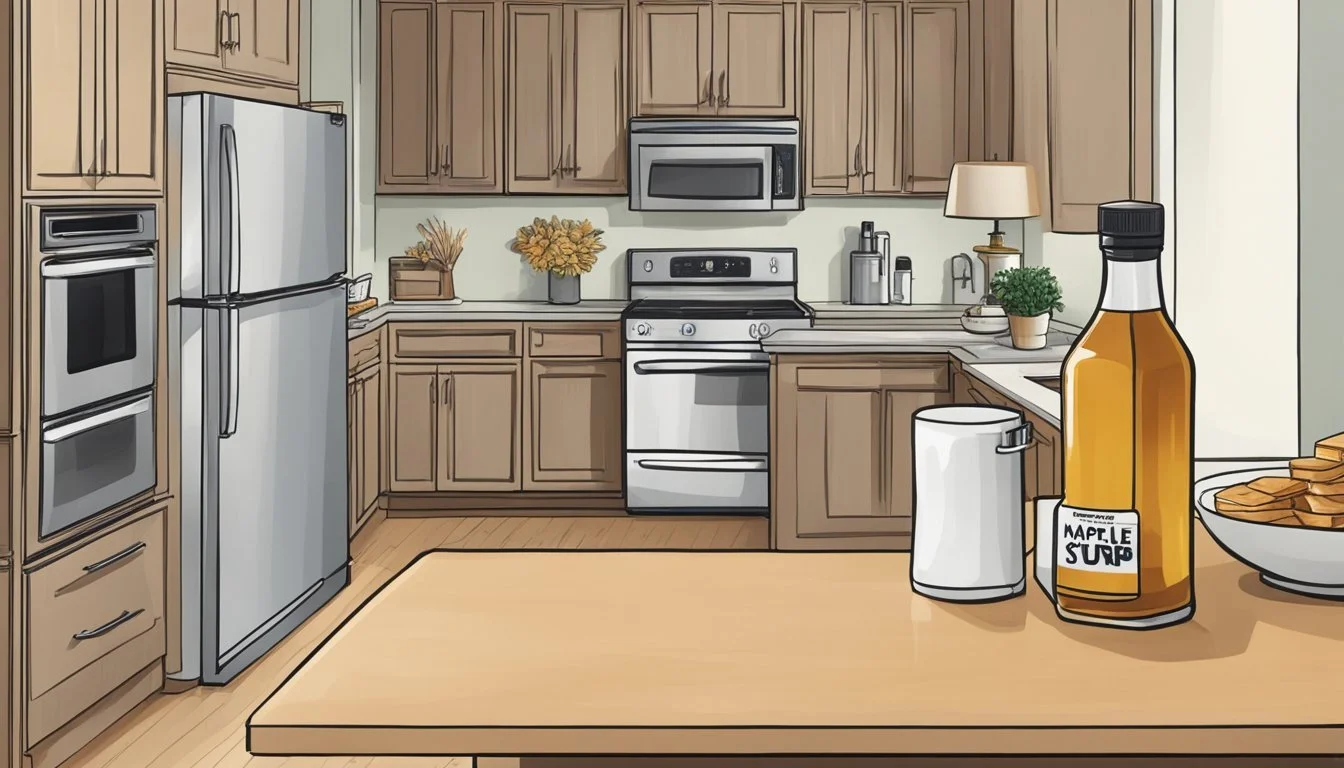Does Maple Syrup Need to be Refrigerated?
Understanding Storage Practices
Maple syrup, a pantry staple and a natural sweetener, often raises a common question among consumers regarding its storage: does it need refrigeration? The answer lies in the nature of the product and its susceptibility to spoilage. Once opened, maple syrup should be refrigerated to maintain its quality and extend its shelf life. Refrigeration slows down the growth of microorganisms, which can contaminate the syrup and cause spoilage.
Unopened maple syrup can be stored in a cool, dark place, such as a pantry, and will retain its quality indefinitely due to its high sugar content, which acts as a natural preservative. However, after opening, refrigeration becomes essential to preserve the syrup's flavor, consistency, and prevent the growth of mold. If mold does appear, it can often be removed by skimming, followed by heating the syrup to a slight boil and transferring it to a clean container for refrigeration.
Storing maple syrup in the freezer is another viable long-term option; freezing does not negatively impact the syrup, as it remains pourable even at low temperatures due to its low water content and high sugar concentration. This ensures maple syrup is readily available for use whenever needed without any compromise on its quality.
What Is Maple Syrup?
Maple syrup is a natural sweetener that is created from the sap of maple trees. This distinct liquid boasts a complex flavor profile and consistency revered in culinary circles.
Source and Production
The production of maple syrup begins with the tapping of maple trees, primarily in regions such as Vermont and Canada, to collect the sap. Pure maple syrup is made by evaporating water from the sap to concentrate the sugar content. The process is meticulous, leveraging both traditional methods and modern technology to ensure the highest quality. Real maple syrup contains just one ingredient: the sap itself, setting it apart from imitation syrups and other sweeteners.
Types of Maple Syrup
Maple syrup is categorized by grades which are based on color and flavor. The grading system includes:
Grade A Golden Color with Delicate Taste
Grade A Amber Color with Rich Taste
Grade A Dark Color with Robust Taste
Grade A Very Dark with Strong Taste
Each type corresponds with the time of harvest and the concentration of sugars, resulting in a spectrum where lighter syrups have a subtler flavor and darker syrups exhibit a more intense maple taste. Maple from Canada and some states like Vermont follows a rigorous standard ensuring the grades reflect a consistent quality and taste profile.
Storing Maple Syrup
Proper storage methods are crucial to maintain the quality and extend the shelf life of maple syrup. Whether choosing refrigeration or exploring alternative methods, airtight containers are essential for preserving the syrup's flavor and preventing spoilage.
Refrigeration Essentials
Upon opening, maple syrup should be stored in the refrigerator to prevent contamination and to slow down any microbial growth. Glass containers or food-grade plastic bottles with tight seals are most effective in retaining the syrup's original taste and color. Maple syrup remains safe and flavorful when kept in a refrigerator set between 32°F (0°C) and 40°F (4°C).
Alternatives to Refrigeration
For long-term storage, freezing maple syrup is an excellent option as it does not alter the syrup's quality. It can be stored in the freezer indefinitely in a well-sealed container. Mason jars or airtight freezer-safe containers are suitable choices for preserving syrup in frozen form. This method ensures that maple syrup is protected from oxygen exposure, which could otherwise lead to darkening or flavor changes.
Signs of Spoilage
Monitor maple syrup for signs of spoilage regularly, irrespective of the storage method. Indicators include mold growth, off-odors, and change in color. Should any of these signs be evident, it is best to discard the syrup. Proper storage in an airtight container, whether in a refrigerator or pantry, can prevent such unwelcome changes and assure one enjoys the maple syrup at its best quality.
Benefits of Refrigeration
Refrigerating maple syrup is key in maintaining its quality over time. The cool environment of a refrigerator helps to prevent spoilage and preserve the natural flavor of the syrup.
Flavor Preservation
Keeping maple syrup refrigerated can greatly maintain its distinctive flavor. The low temperature inside a refrigerator inhibits the growth of mold and other microorganisms that could cause off-flavors. Since maple syrup has a high sugar content, which is conducive to mold growth at room temperatures, refrigeration ensures that the syrup remains cool, which helps in keeping its taste as close to how it was when it was first opened.
Extending Shelf Life
Refrigeration can increase the shelf life of maple syrup significantly. Without the addition of preservatives, pure maple syrup is susceptible to spoilage. But when stored at a consistently cold temperature provided by refrigeration, it remains usable for up to a year, ensuring consumers can enjoy it over a longer period without the quality degrading.
Impact of Temperature and Time
Storing maple syrup at appropriate temperatures significantly affects its quality over time. The syrup's shelf life can vary depending on whether it is kept at room temperature, in the fridge, or frozen.
Room Temperature Storage
Unopened maple syrup can be shelf-stable at room temperature. However, once opened, it's vulnerable to spoilage because of potential exposure to bacteria and molds, especially if not stored properly. Typically, it is recommended to store opened maple syrup in the fridge to extend its freshness and prevent growth of microorganisms. Storage temperature at room level should ideally remain consistent, as fluctuations can alter the syrup's taste and accelerate spoilage.
Long-Term Storage Options
For long-term preservation, freezing maple syrup is an efficient method. It does not freeze solid due to its high sugar content, making it easy to thaw and use as needed. When stored in the freezer, maple syrup can retain its quality indefinitely. Transferring the syrup into a glass container before freezing can help maintain flavor and color since glass is impermeable to oxygen. The fridge also offers a suitable storage environment, extending the shelf life up to a year when the syrup is kept in airtight containers, again preferably glass.
Packaging and Its Role
When storing maple syrup, the type of packaging can significantly influence its shelf life and flavor preservation. Different materials offer varying levels of protection against factors like oxygen exposure, which can affect the syrup's quality over time.
Glass vs Plastic
Glass Containers:
Glass is preferred for maple syrup storage for its non-permeable qualities. It prevents oxygen from seeping in, helping to maintain the syrup's color and flavor. Unlike plastic, glass doesn't interact with the syrup, ensuring the taste remains unaltered.
Advantages:
Impermeable to oxygen
Does not impart flavors
Can be sealed tightly
Plastic Containers:
Plastic is more permeable and allows some air to pass through, which can lead to a darker color and potential flavor degradation. Maple syrup producers and consumers may use plastic for convenience, but it is less ideal for long-term storage.
Disadvantages:
Permeable to oxygen
May alter flavor over time
Less effective for long-term storage
Sealing and Oxygen Exposure
Proper Sealing:
Whether maple syrup is bottled in glass or plastic, airtight sealing is crucial. Properly sealed containers ensure that the syrup is protected from air and potential contaminants, which could spoil the syrup or diminish its quality.
Sealing methods include:
Screw-on lids, especially on glass mason jars
Tamper-evident caps for safety and freshness
Oxygen's Impact:
Oxygen exposure can cause maple syrup to degrade, leading to changes in flavor and color. Packaging that limits oxygen exposure will preserve the syrup's quality longer, making it a key consideration for both producers and consumers.
Considerations for syrup storage:
The less air in the container, the better
Containers should be filled to capacity to minimize air space
By understanding the role of packaging materials and sealing methods, consumers can make informed decisions to maintain the integrity of their maple syrup, whether they choose to store it in the refrigerator or freezer.
Using Maple Syrup in Recipes
Maple syrup is a versatile ingredient that enhances both sweet and savory dishes with its rich flavor. It serves as a natural sweetener that can be incorporated into a myriad of recipes from breakfast foods to glazes and marinades.
Sweet and Savory Applications
When it comes to sweet applications, maple syrup is commonly drizzled over pancakes and waffles. But its uses extend far beyond the breakfast table. It can be used in baking as a substitute for cane sugar due to its similar sugar content. It adds a unique depth of flavor to baked goods like cookies and cakes.
For savory dishes, maple syrup offers a hint of sweetness that complements the flavors. It works particularly well as a glaze for meats such as ham or sweet potatoes, and can beautifully counterbalance the natural saltiness of these dishes. Adding it to vinaigrettes or barbecue sauces can impart a refined sweetness that enhances the overall taste profile.
Reheating and Cooking
Maple syrup can be incorporated into recipes that require reheating or cooking. One should keep in mind its sugar content when heating, as it can burn quickly if cooked at too high a temperature. To avoid this, maple syrup can be added to recipes like oatmeal or tea and coffee after they have been removed from direct heat.
In baking, it may be used in place of honey or other sweeteners. However, when substituting for dry sugars like granulated sugar, one may need to adjust the level of milk or other liquids in the recipe to account for the additional moisture that maple syrup introduces.
Additional Considerations
When considering the proper handling and storage of maple syrup, one must take into account not just basic refrigeration but also its substitutes, safety protocols, repackaging methods, and innovative storage techniques.
Maple Syrup Substitutes
Maple syrup can be substituted with products like high fructose corn syrup or table syrups for economic reasons or personal taste preferences. However, these substitutes may lack the characteristic flavor and natural quality of pure maple syrup. Vermonters and producers from other maple-rich regions advocate for the unique taste and purity of true maple syrup over alternatives.
Food Safety and Handling
When dealing with maple syrup, food safety should be a priority. Maple syrup should be hot-packed and can benefit from strict handling procedures similar to those recommended by the USDA for other canned goods. Once opened, it should be kept in glass jars and refrigerated to prevent spoilage and the development of mold. If an odor is detected or the appearance changes significantly, it’s advised to discard the syrup.
Repackaging and Canning
For those who purchase syrup in bulk or tap their own trees, repackaging and canning at home can be an effective method of preservation. Utilizing a candy thermometer to ensure proper temperature when hot-packing syrup is essential. Syrup should be canned at 185°F to maintain sterility. Whether repackaging or canning, strict food safety practices must be adhered to, including the use of sterilized glass jars for storage.
Innovative Storage Ideas
Maple syrup's lifespan can be extended through freezing, and it doesn’t require thawing as it doesn’t freeze solid. Some users freeze maple syrup in ice cubes trays for long-term storage or for convenient portioning in cooking and beverages. When stored properly in a freezer, maple syrup maintains its quality indefinitely. Storage in a sugarhouse or pantry should be in cool, dark conditions to preserve the syrup's color and flavor.







